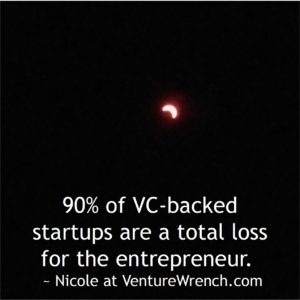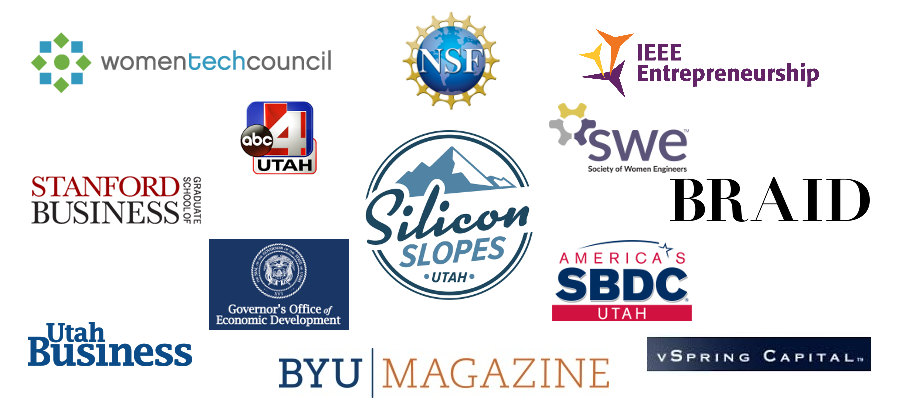 A super smart founding team I know is doing a Series A – and they are personally putting in about 40% of the total round! Why? Because they’re getting preferred stock for that 40%! Of course they are getting cash for the other 60%, but they are also getting a firm valuation of the business.
A super smart founding team I know is doing a Series A – and they are personally putting in about 40% of the total round! Why? Because they’re getting preferred stock for that 40%! Of course they are getting cash for the other 60%, but they are also getting a firm valuation of the business.
As the team contemplated their capital plan, they correctly realized that if they just “put the cash in” to the business as the sole owners, it didn’t help them at all as they went forward working with investors. Cash put in without a round would just “disappear” into the common stock bucket (see more below about why you should assume common stock is worth zero at the beginning!). But, by putting their own cash into an investor round, they get preferred stock – with all the preferences that accrue to other investors! Brilliant.
Here’s some more background as to why this is a very savvy move. When you set out as an entrepreneur, it is important to remember that, until the day that you either sell to a big acquirer (for many times the invested capital) or you do an IPO, you should consider that common stock is worth zero.
 Hard to imagine, isn’t it, because that is what you’re working so hard for, and you keep thinking “look at all this equity that I have” or the infamous “it’s my company”. But the preferred stock that investors get is called preferred for a reason – they get all their money back, up to their investment, plus certain returns (specified in the preferences), and depending upon market conditions, those preferences can, and often do, eat up all the money in a modest acquisition, a break even or even a collapse, where there might be some cash available to pay off investors.
Hard to imagine, isn’t it, because that is what you’re working so hard for, and you keep thinking “look at all this equity that I have” or the infamous “it’s my company”. But the preferred stock that investors get is called preferred for a reason – they get all their money back, up to their investment, plus certain returns (specified in the preferences), and depending upon market conditions, those preferences can, and often do, eat up all the money in a modest acquisition, a break even or even a collapse, where there might be some cash available to pay off investors.
Remember, only 10% of VC deals go big, the rest are “break even” (for the VC) or a total loss, which means that roughly 90% of VC deals should be considered a total loss for the entrepreneur who only owns common stock.
We talk in detail about these issues in our course “Designing the Perfect Investor“, but let’s look at that a little more closely. Here is the inside scoop on what the VC industry expects as the average success of their investment portfolio.
- Top 10% of deals are home runs (10X to 100X the VC’s investment)
- Bottom 40%-50% lose all of investment from the VC (collapse)
- Middle 40% to 50% = breakeven – that is the VC gets out what they put in
So, if you are the entrepreneur in a deal where the VC loses all of their investment, you can bet you don’t get anything for your common stock. If your deal is a “breakeven” for the VC, that means that their preferred stock gets back what they put in, and this is usually the case in a moderately sized acquisition, the investors with their preferred stock take all of the acquisition value. Again, the entrepreneur who only has common stock, gets pretty close to zero, except for whatever salary they’ve drawn (often at a discount!). Of course, what everyone thinks is that they will be the 10% who wins big! (let’s remember our statistics friends!)
My advice, plan for the big win, work for the big win, but make sure to get some preferred stock any legit way you can so you get something more than a discounted salary for all your hard work!
When we created our last company, DoBox, there were three co-founders, me (Pres & CEO), Brad (CTO – we are a husband and wife team) and our third co-founder, our Director of R&D. Brad and I, of course had the benefit of two incomes, our third co-founder didn’t, and we were further along in our careers (read “older”) than he was and had more cash on hand. So we put in about $20,000 initial equity, and then our co-founder “earned out” his equity through work (he had to pay taxes on it, but that’s it). We had a split of 37.5% for me, 37.5% for Brad, and 25% for our partner, because Brad and I were contributing more time and cash. I was also working full time as we raised funding and my two partners were working “regular jobs”.
 If I were to do this today, I wouldn’t put it more than a few hundred dollars each for the founding equity – and I would have had all three of us buy our common stock with actual cash on the same cost per share basis (share distribution depends upon effort, IP contributions etc). Then, Brad and I would have contributed the additional $20k differently, to help pay for hard costs (these hard costs include travel for fundraising and market validation, prototyping, raising $$ etc).
If I were to do this today, I wouldn’t put it more than a few hundred dollars each for the founding equity – and I would have had all three of us buy our common stock with actual cash on the same cost per share basis (share distribution depends upon effort, IP contributions etc). Then, Brad and I would have contributed the additional $20k differently, to help pay for hard costs (these hard costs include travel for fundraising and market validation, prototyping, raising $$ etc).
In addition, for a full year, the company (nearly 20 people!) were officed in our basement – for free, saving the company another roughly $20k. Finally, Brad and I took a significant discount in compensation, contributing another $100,000 over 2 years that the company didn’t have to pay, again because we are entrepreneurs. As a note, studies have shown that entrepreneurs work for less than “hired gun” CEOs….this isn’t really a good thing for the entrepreneur!
You see, we didn’t get anything extra for putting cash on the barrel head or for providing free real estate or for taking a salary discount. Investors view it as “it’s your company, of course you put cash in, sacrifice, etc”, but we only had common stock for all of our significant contributions. I will note that we volunteered all of these items as dedicated entrepreneurs (our investors were great!), it was not until looking back over the entire experience I could see the mistakes we had made. Instead of the “in kind” contributions, we should have charged the company market rates on all items, rent, salary etc, and then lined up next to our investors and put our cash in on the same terms that they received.
That’s the key to getting preferred stock for your “cash in” to the company, assuming it’s substantial – simply make sure you are investing alongside your investors!
One mechanism to accomplish this in the earliest days is the traditional “convertible note”. Under a convertible note, cash goes into the company as a loan (with repayment and interest terms), but if certain milestones are achieved, such as receiving outside investment, the note “converts” to preferred stock at “better” terms than the investors. Usually better means a fraction of the investors’ price per share or receiving shares plus warrants. These convertible terms are “better” than the final investor round because the money came in at an early, more risky time. There are now several new investment mechanisms, such as SAFE or SIMPLE, where investments come in as equity, but still without setting a value on the company.
These are all mechanisms that are used for angel rounds, rather than setting a valuation before the professional investors, the angels invest and get some type of multiple of the later VC investment valuation. This type of mechanism is usually well accepted by the VC industry and sophisticated investors and so you should consider putting your cash in this way before you have investors.
The very idea of putting your cash in to get preferred stock alongside your investors may not be a standard maneuver for entrepreneurs yet, and you may get some pushback or attempts to renegotiate the terms, but you have a strong case, particularly if you have a significant amount of money to invest in the company. This is one way to make sure that you get a share of preferred shares as your “backup position” in case you are one of the 90%, rather than one of the 10%. I know that if we had taken rent or additional salary we would have to pay taxes, but we would also have had additional cash to invest, and to invest alongside our investors on the same preferred terms they had.
I know what you’re thinking – YOU are going to be part of the 10%. Well, I hope so, but 90% of you WON’T be part of that 10%! It is hard to imagine, but the point of entrepreneurship is to navigate the rocky shoals to maximize success no matter happens, and this trick will help you in that regard!
I wish that we had focused on getting preferred stock, and I hope that this might help you too!


This sounds great, until the VC investor tells you that they won’t invest unless your entrepreneur-preferred shares convert into common. There is a reason why VC investors want entrepreneurs mostly in common — they want control over the company. So whereas this might feel brilliant, it’s unlikely to be a useful approach as you go out and raise significant VC capital. A better approach is to put some money in as a convertible note, which then converts into preferred under the terms of the VC investor. Most VCs won’t complain if you own a small portion of their round. But if all founder shares are preferred — forget it.
David, You have exactly made my point. Of course “most” founders shares have to be common shares. As I explain in the post, the goal is to invest alongside investors, on the same terms as they do, rather than taking such a big discount in compensation, which most of us founders apparently usually accept! The convertible note strategy you mention is one such approach for the very earliest stages. As the company grows, making sure you have dollars on the table right alongside your investors is an ongoing way to keep notching preferred stock for you (and anyone else who feels to invest). Thanks for commenting!